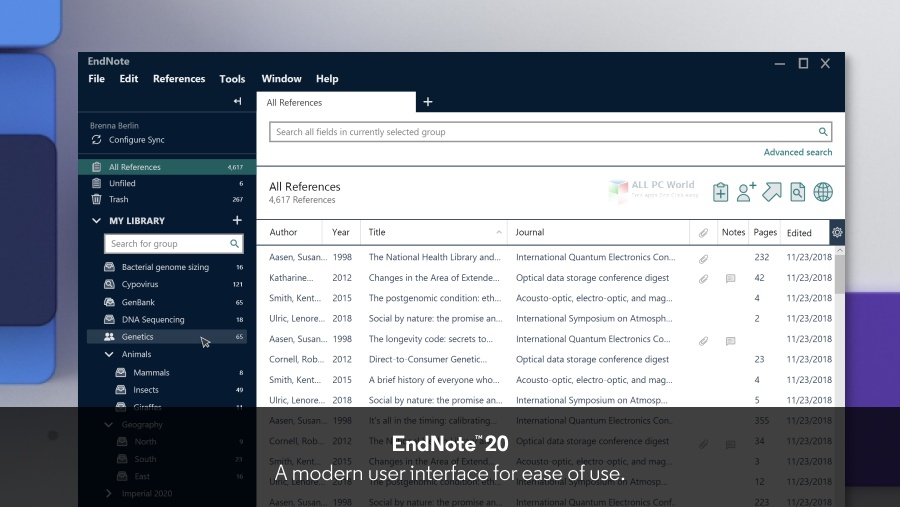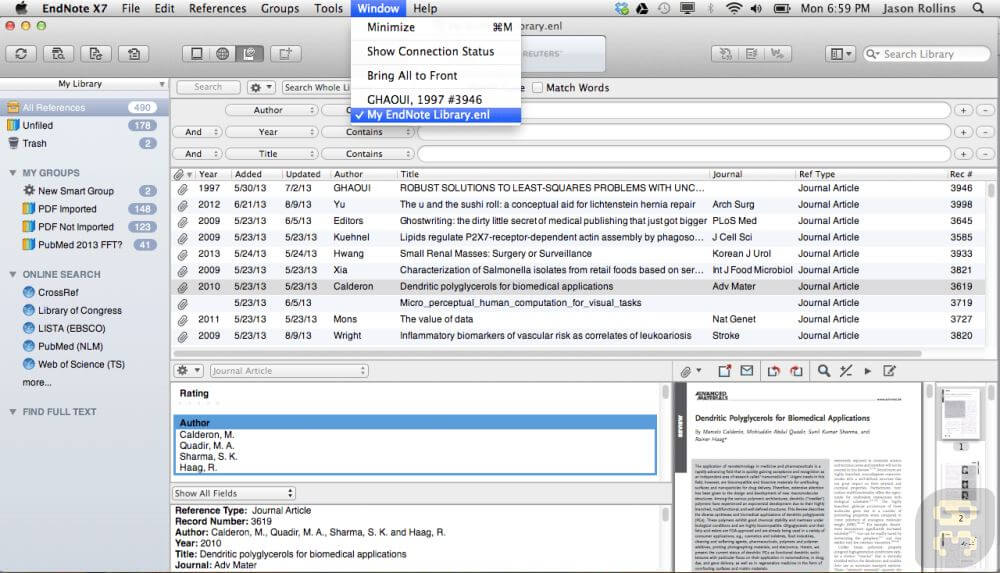

You’ll see that the second set of options allows you to select individual fields, such as parts of a citation or bibliography entry, and choose how they will be imported into EndNote. The settings at the top of the window control the reference types, such as “book” or “article,” so select which type you want the previously stored Reference Manager references to convert to. This is done in the field mapping window, that simple window with two sets of customization settings. However, if you’ve customized your Reference Manager database, you’ll need to choose how to translate those customizations to EndNote. If you haven’t made any customizations, simply click “convert,” name your EndNote library, save – and you’re done.

Keep in mind that the way you choose to save your database depends on whether or not you’ve made any customizations to your Reference Manager database. You’ll do this the same way you open your other EndNote libraries just select “Reference Manager Database” from the drop-down list of file types. Start by opening your Reference Manager database in EndNote. We can walk you through the process – it’s amazingly quick and simple. Best of all, you don’t even have to open Reference Manager.Īnd now that EndNote has library sharing functionality, it’s time to make the switch from Reference Manager to EndNote.

Good news for Reference Manager users: changing those entries to EndNote citations is a piece of cake, and it won’t involve any text editing, change in format or loss of data. How do some Reference Manager commands work in EndNote? Reference Manager to EndNote “Cheat Sheet" (PDF).Converting your Reference Manager library to an EndNote library (YouTube).

Detailed Reference Manager to EndNote conversion instructions (PDF).Making the switch from Reference Manager to EndNote


 0 kommentar(er)
0 kommentar(er)
